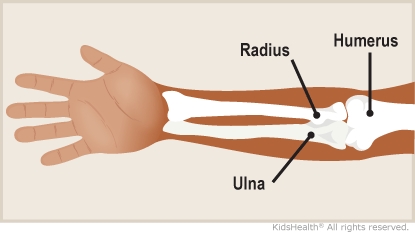A fractured elbow means that one of the three bones in the elbow is broken. A splint protects the bone while it begins to heal. In a few days, an orthopedic specialist (bone specialist) will replace it with a cast. You can help your child heal well by keeping follow-up appointments and taking good care of the splint.


Daily splint care:
Problems to watch for:
Be sure to:



How do kids get an elbow fracture? Kids can break a bone in the elbow during play or sports. Often, this happens when an arm is stretched out to stop a fall.
What is the difference between a splint and a cast? Both a splint and a cast support and protect the broken bone while it heals. In a cast, the hard part goes all the way around the arm. But in a splint, the hard part only goes partway around the arm (this allows space for swelling). Splints and casts can feel heavy, so your child may have had a sling placed around the neck and over the splint for support.
If no fracture was seen on the X-ray, why does my child have a splint? The elbow is an important and complicated joint where three bones come together. X-rays can't always show us everything we need to see. Sometimes the broken bone is obvious on an X-ray. Other times, pain in the elbow or fluid collecting around the elbow joint is the only sign of a fracture.